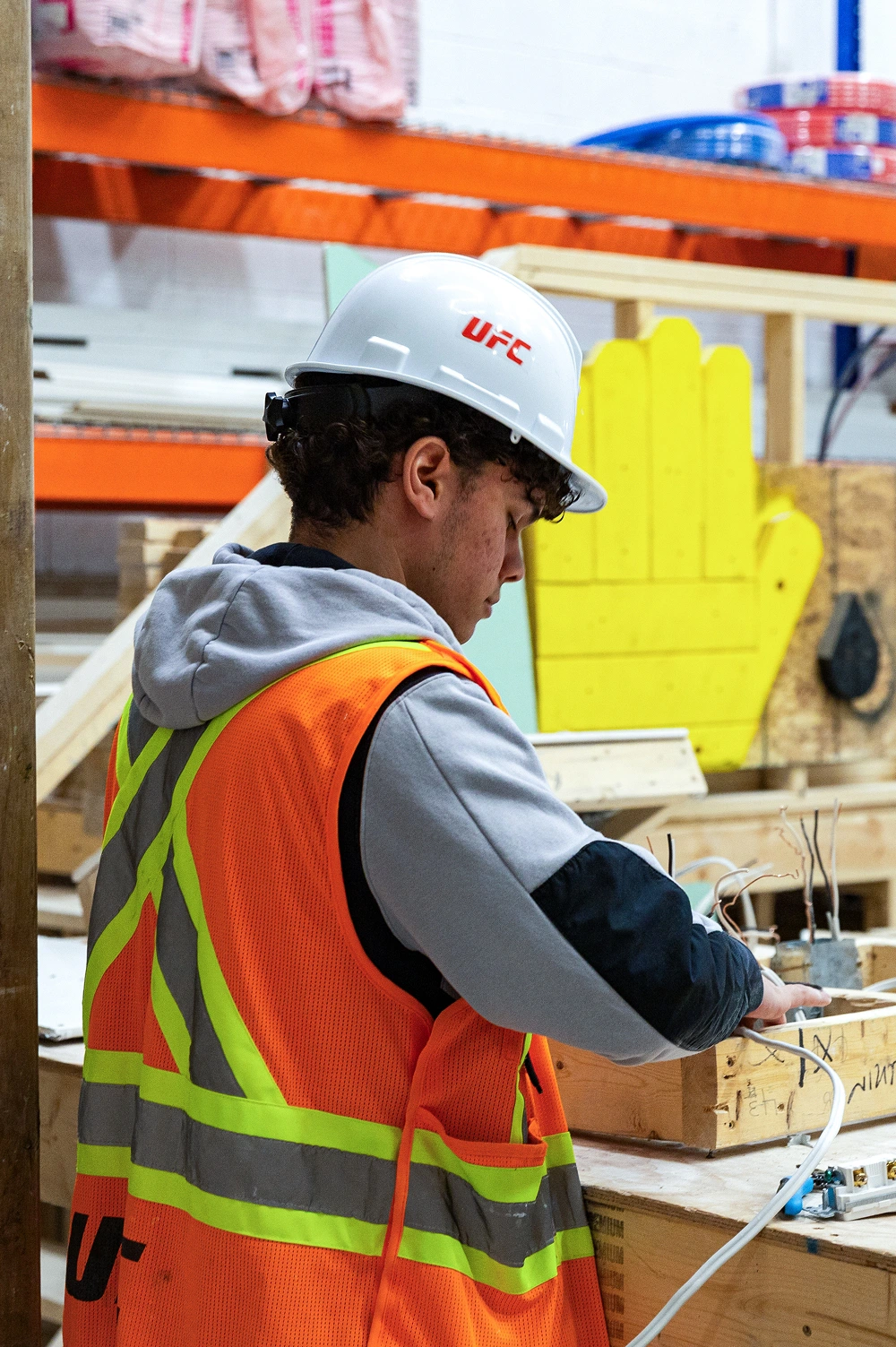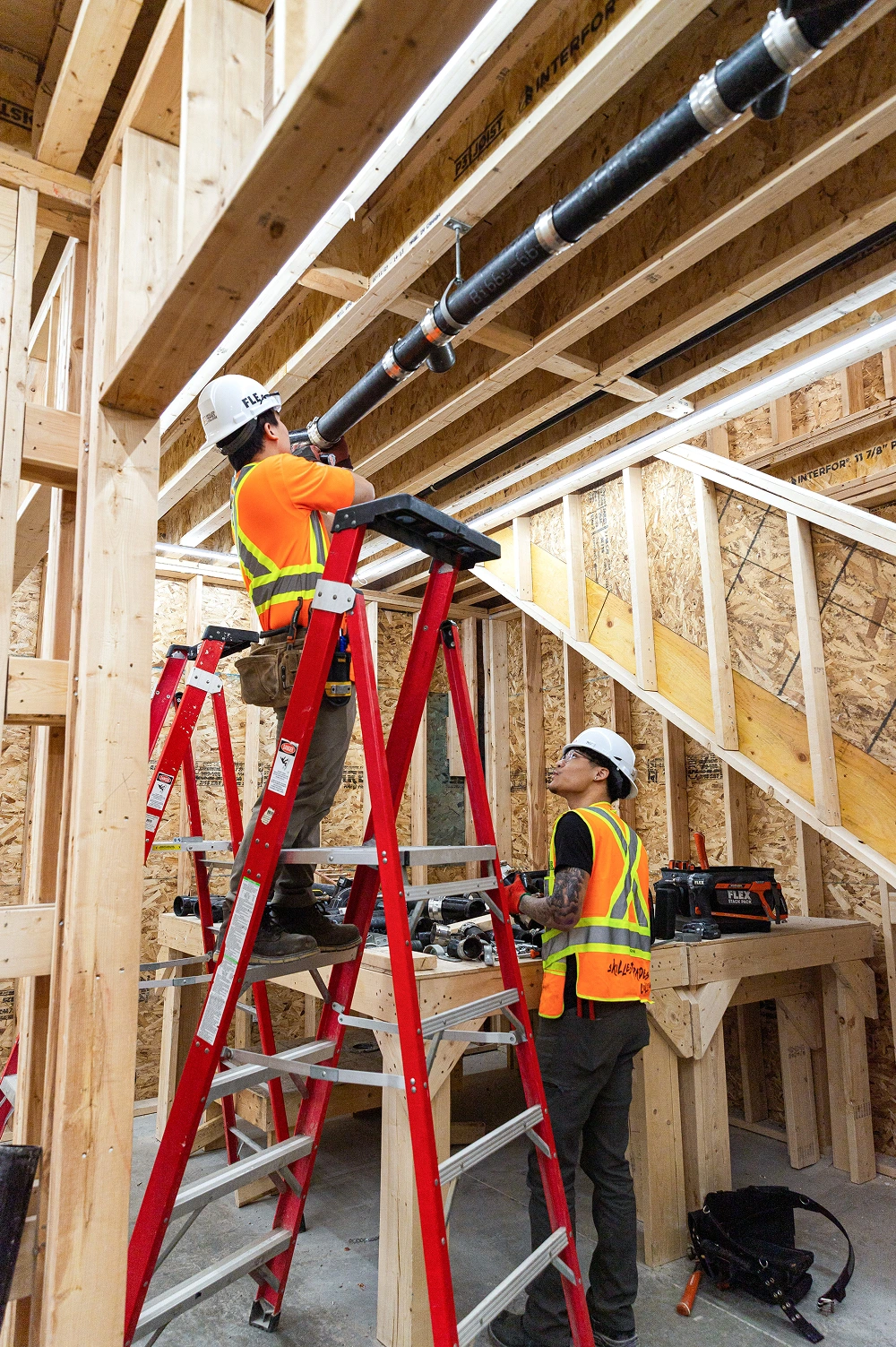Why More Women Are Considering Careers in the Trades

Published On
April 10

Blueprints serve as the backbone of any construction project offering a detailed visual language that guides the transformation of ideas into tangible structures. These complex lines, symbols, and numbers may seem foreign to anyone starting a career in construction, but mastering the art of blueprint reading is an essential part of the toolkit that bridges classroom learning with real-world application.
At Skilled Trades College of Canada, our 12-week pre-apprenticeship courses are designed to equip students with both the hands-on experience and theoretical knowledge necessary to excel in the trades. This includes a thorough understanding of how to read blueprints and other construction site plans, whether it’s for framing, electrical or plumbing rough-ins, and beyond.
In this article, we’ll dive into the basics of our blueprint reading course, from recognizing symbols and scales to decoding the intricacies of architectural and engineering plans!
A blueprint is a set of engineering or architectural drawings that provide all the information needed to construct something. Think of them as the cheat codes that tell you everything from a building's overall layout to the precise placement of electrical outlets.
Now, why is knowing how to read construction blueprints so important?
These construction drawings or plans communicate the design, dimensions, materials, and other critical details of a construction project so the people involved can accurately interpret and execute the intended design. Without them, site managers or construction workers wouldn’t even know where to start in the construction process!

Image Source: Canva
Whether you’re planning to build a career as a general contractor or simply want to learn how to tackle home renovations to save money, reading blueprints is a key component to project success. This all starts with understanding what you’re looking at. Here are the key elements you need to know when interpreting a construction site plan:
Now that you have the anatomy of a blueprint down pat, it’s time to learn how to read construction blueprints! Here’s a simplified breakdown of how to approach blueprint reading:
Blueprints are filled with specific symbols and abbreviations representing different materials, structures, or actions. Start by studying the legend, which is key to decoding these symbols. Each industry might have variations, so it’s important to learn the symbols relevant to your specific trade. Spend time memorizing them and understanding their meaning in the context of the overall design.
Blueprints are not drawn to their actual size but are scaled down to fit on manageable paper sizes. The scale gives you the ratio of the drawing’s size to the actual size of the structure. For example, a scale of 1:50 means one unit on the drawing equals 50 units on the actual building. Always check the scale before starting your review, as misinterpreting this can lead to major discrepancies in understanding dimensions and distances.
You can usually find the scale in the title block.
Dimensions are numerical values indicating the length, width, and height of elements within the project. They are critical for precise construction and ensuring that everything fits as intended. Check these measurements carefully and use them to verify distances and relationships between different components on the blueprint. Sometimes, you might need to calculate dimensions that are not explicitly provided by using the scale and other known measurements.

Blueprints often come with a specifications document or section that details the types of materials to be used and the standards to follow. This section includes information on the quality and grade of materials, fittings, installation procedures, and finishes. It’s essential to read this section thoroughly to ensure that you fully understand the requirements and standards expected for the project.
Blueprints typically include several types of drawings:
Each view provides different information, and together they give a complete picture of what needs to be built. By analyzing each type, you can understand how the parts of the structure relate to each other and come together.
Often, larger blueprints will have detailed drawings or blow-ups of complex areas in more complicated construction plans. These are meant to provide additional clarity and instructions for specific parts of the project that are too intricate to be detailed on the main blueprint sheets.
Pay attention to these details, as they often include critical information for the correct installation or construction of certain components. Even the best blueprints can have ambiguities, and these notes can be used to address any gray areas and ensure everyone involved in the construction project is on the same page.
Reading blueprints is one of the most essential skills you'll need to master if you want to build a career in construction. As with any other skill, it takes practice.
Skilled Trades College's Intro to Home Renovation program provides a hands-on learning environment where you can learn how to read, interpret, and draw construction blueprints under the guidance of experienced instructors. In just 12 weeks, you’ll learn how to:
That’s not all! Our introductory program also introduces you to other relevant general construction work including flooring installation, framing, insulation and drywall, electrical, plumbing, and more.
Don't just dream of a skilled trades career—get the training to make it a reality. Enrol in a Skilled Trades College pre-apprenticeship course today!
9,281+
LIVES CHANGED

12,481+
WIRES PULLED

85,382+
2X4'S CUT

9,756+
PIPES LAYED

9,281+
LIVES CHANGED

12,481+
WIRES PULLED

85,382+
2X4'S CUT

9,756+
PIPES LAYED

9,281+
LIVES CHANGED

12,481+
WIRES PULLED

85,382+
2X4'S CUT

9,756+
PIPES LAYED
